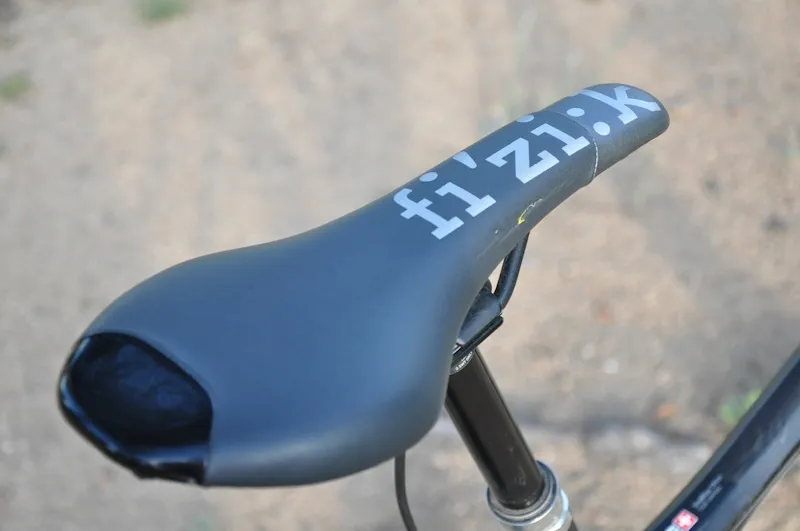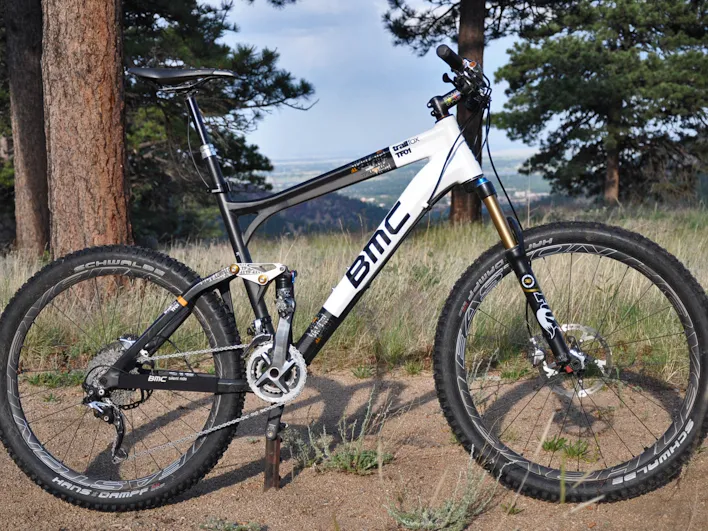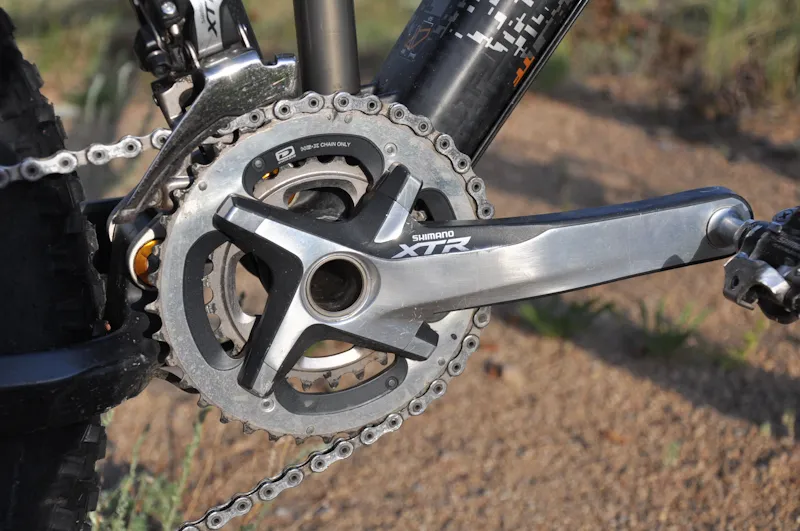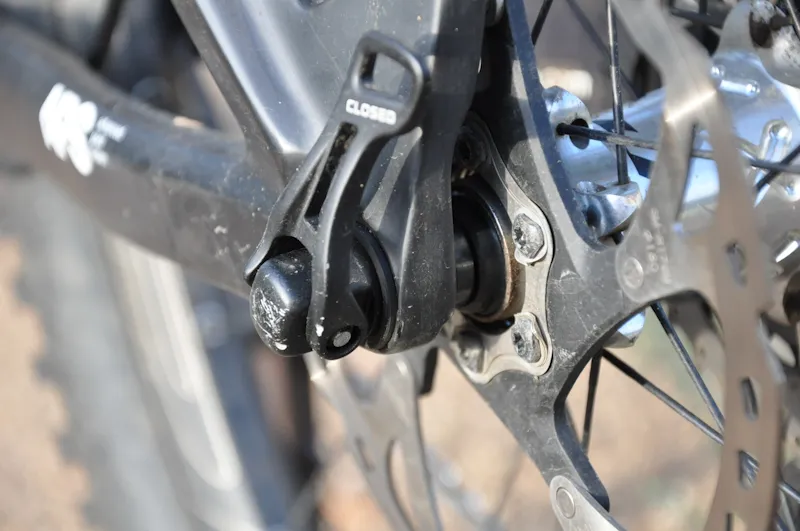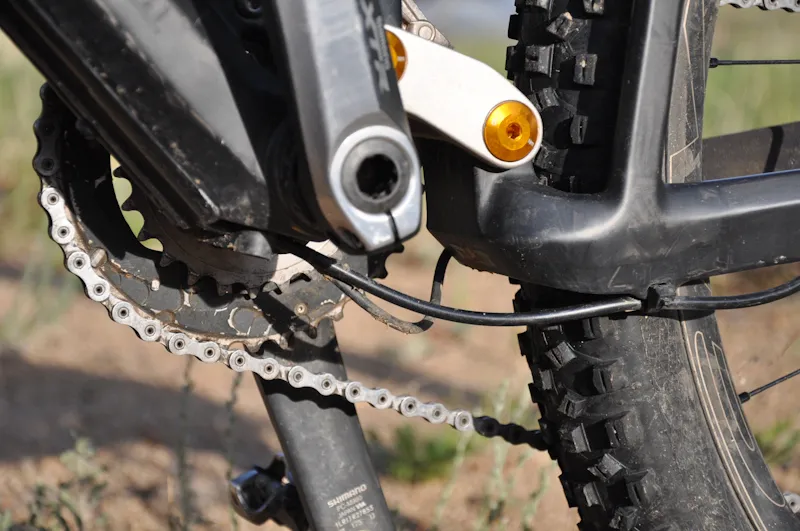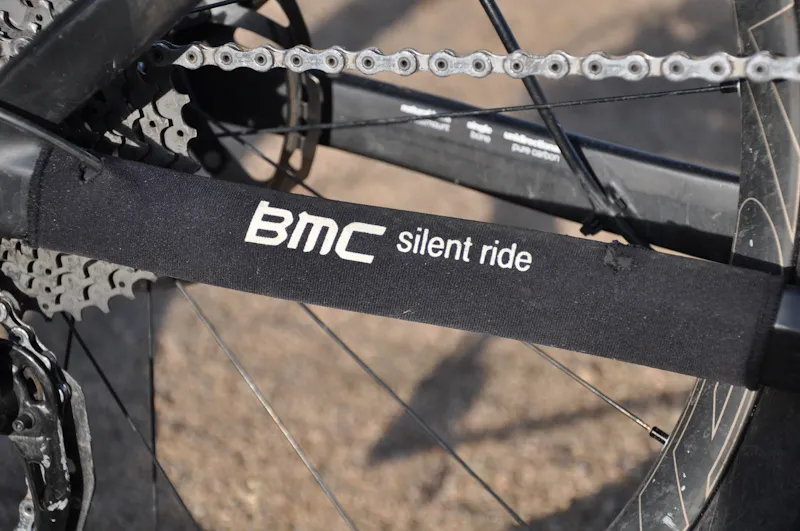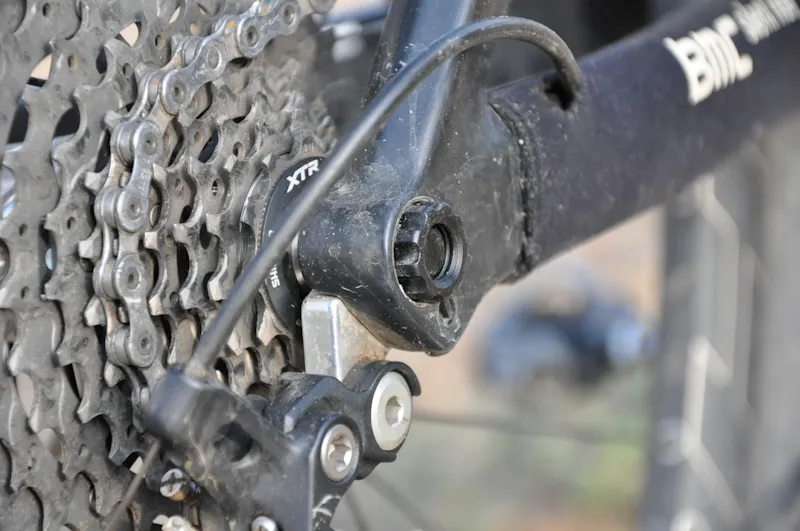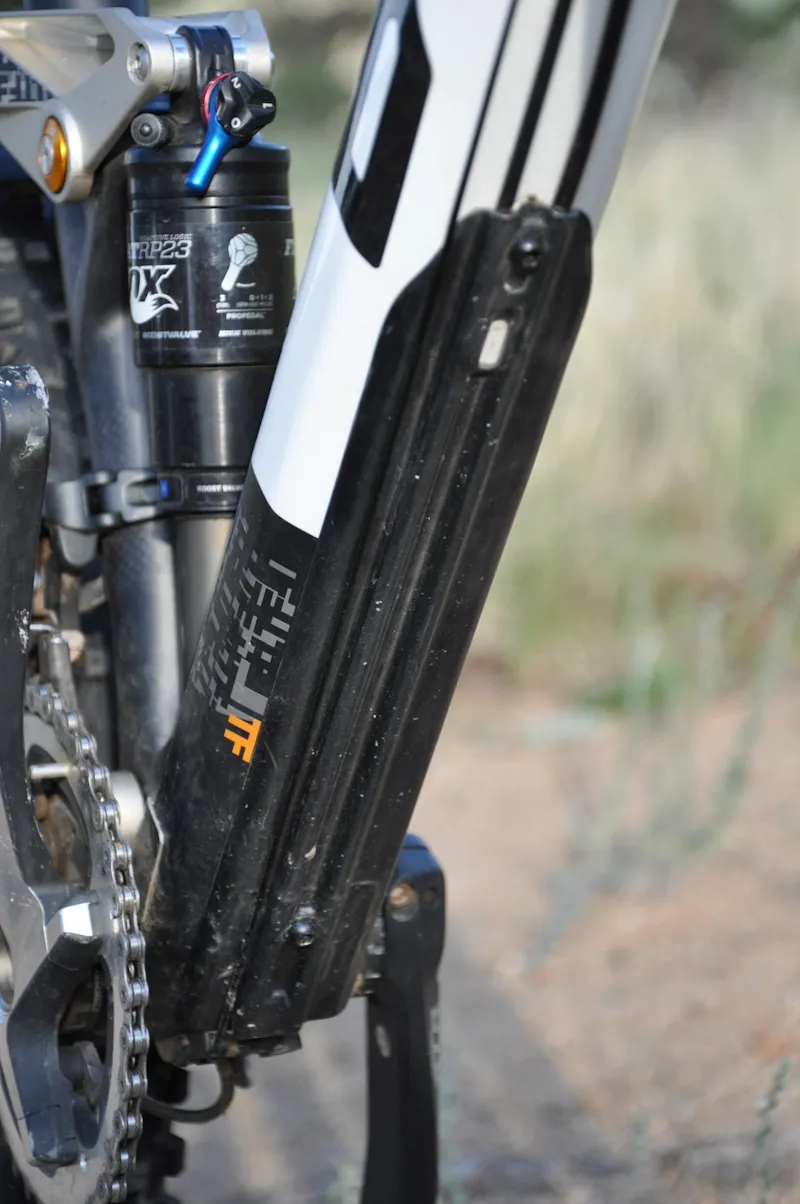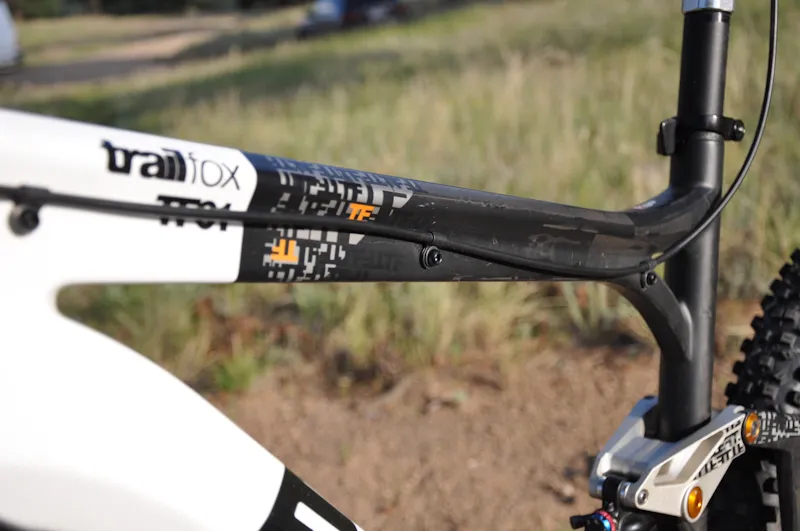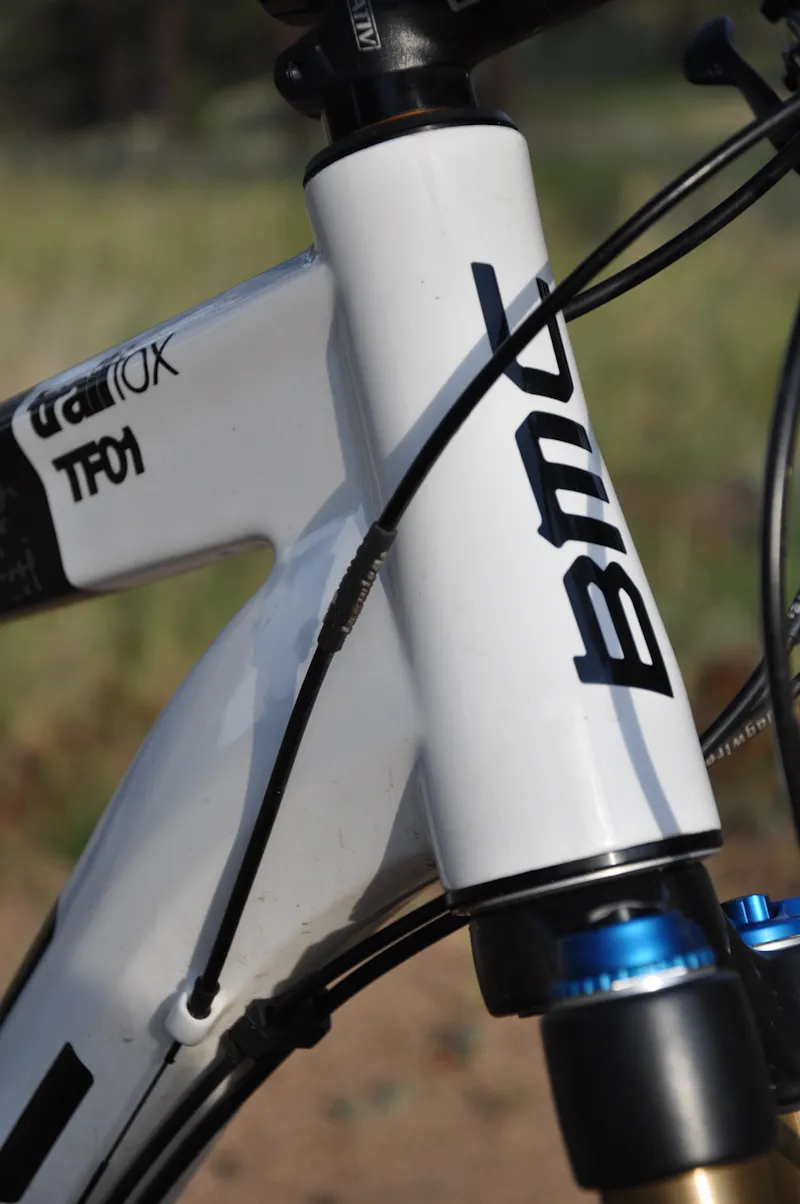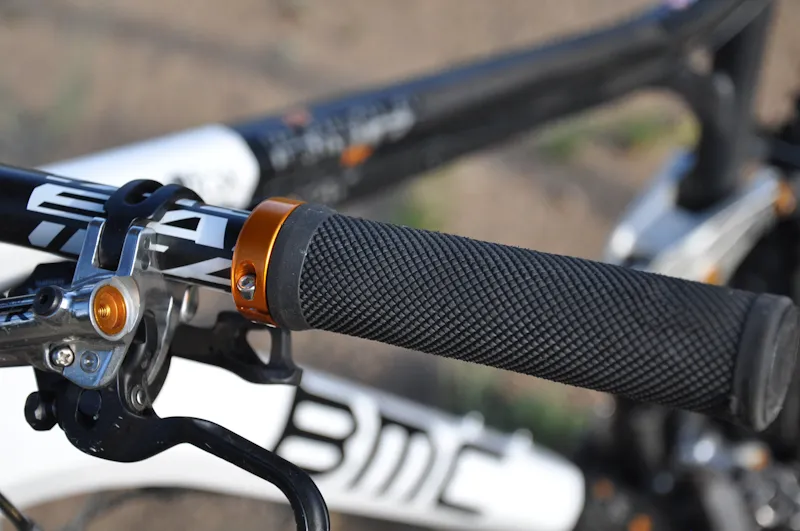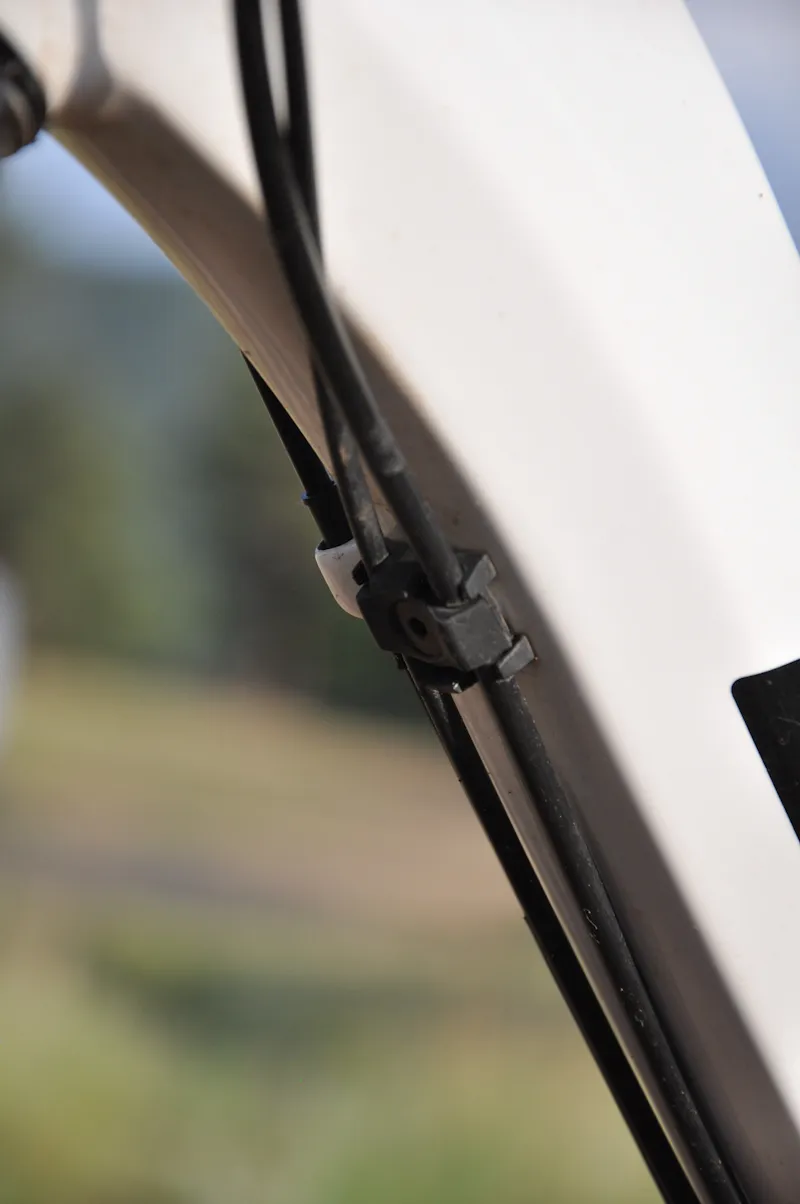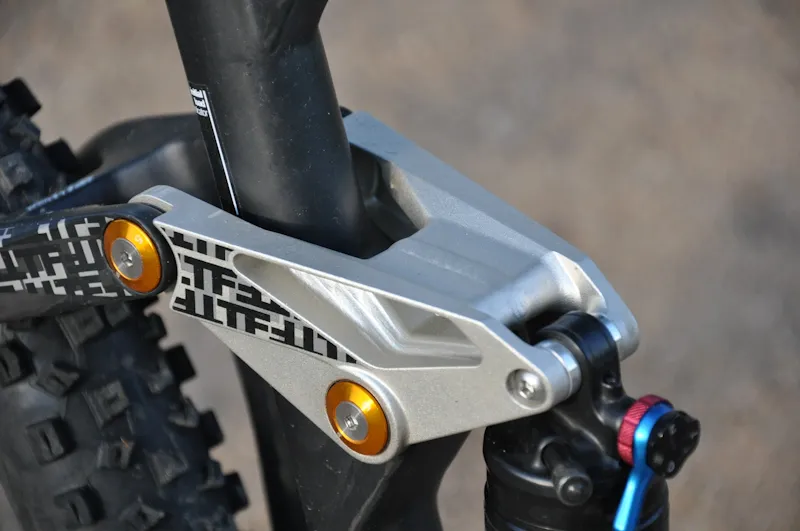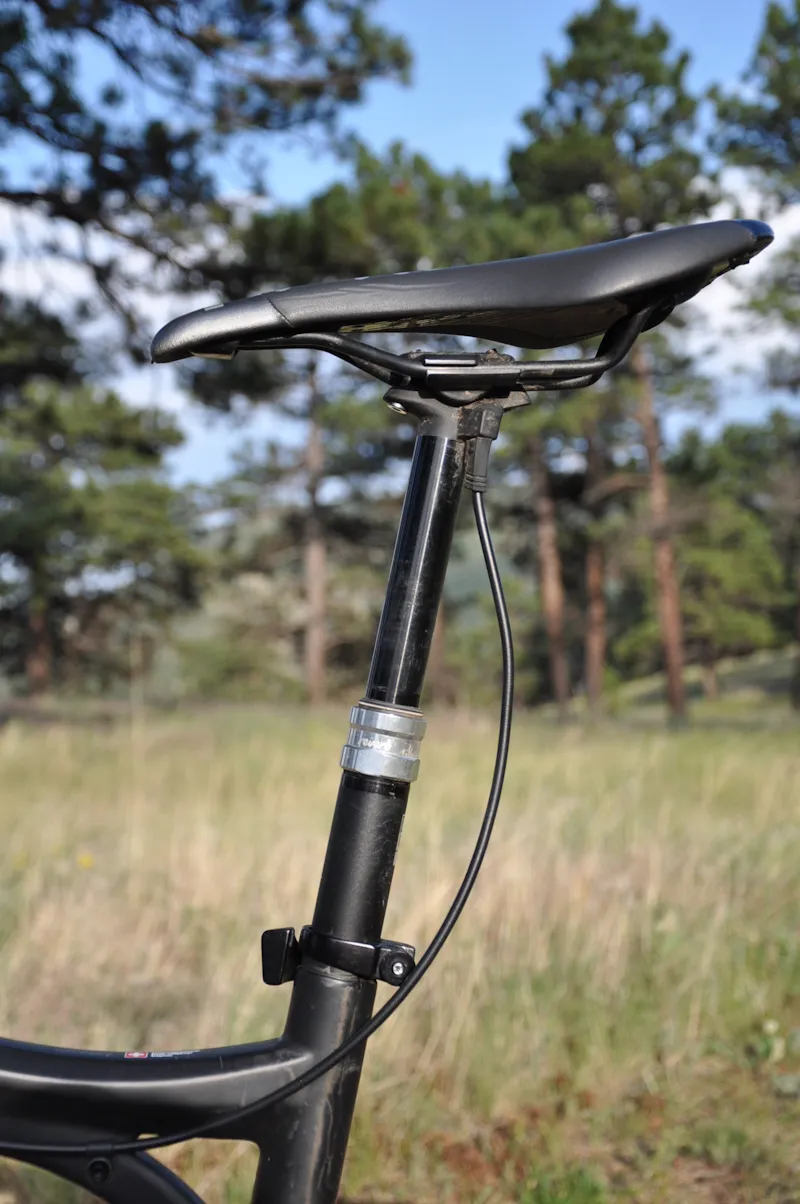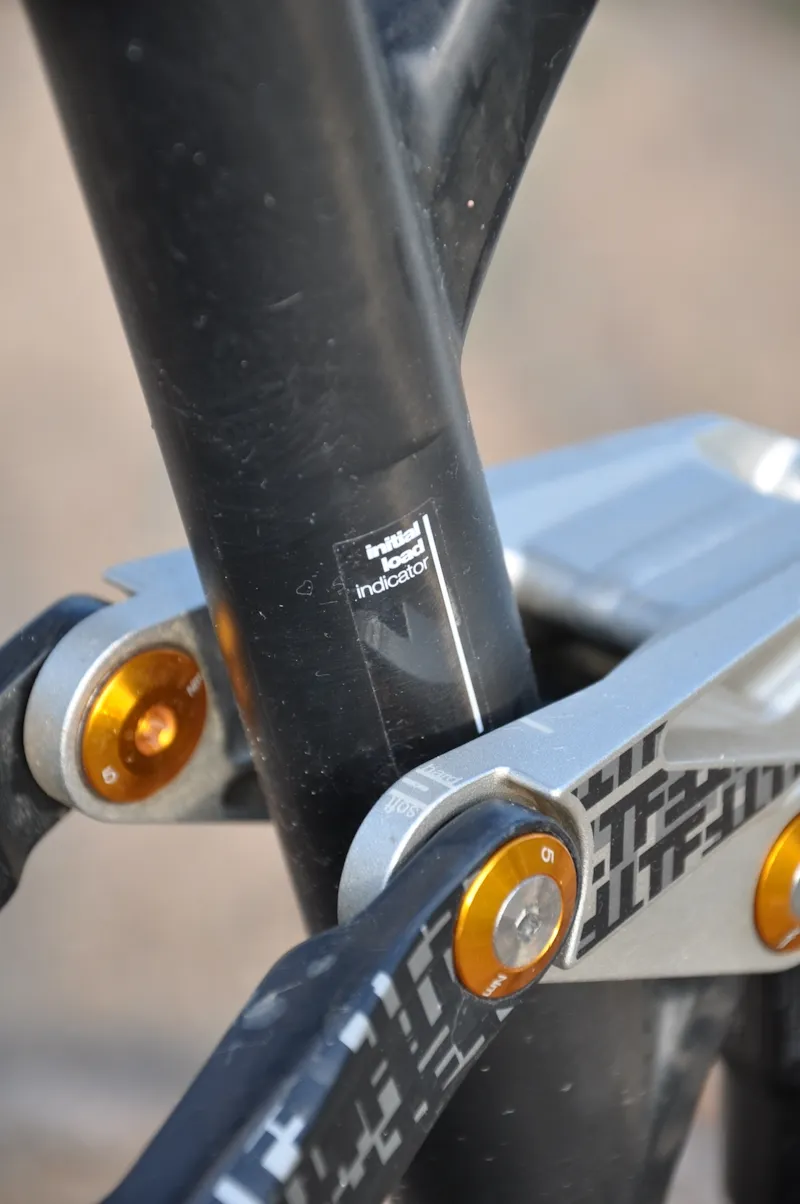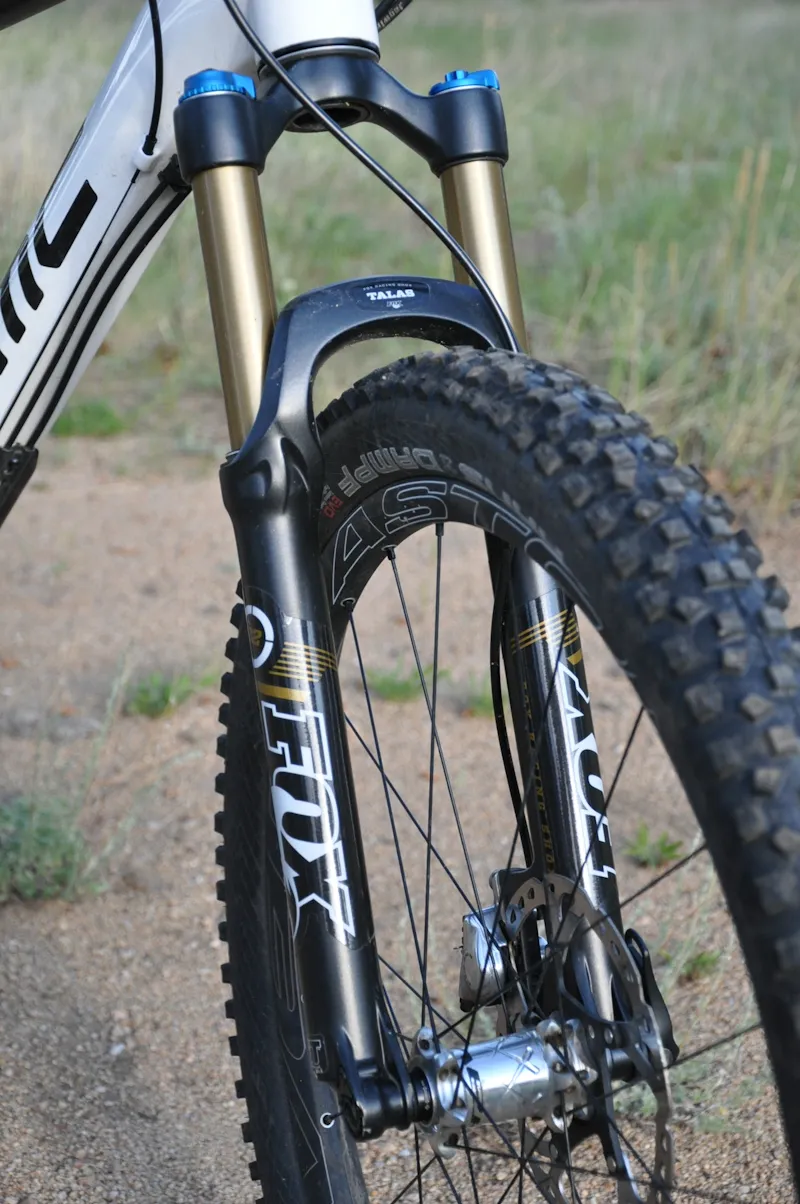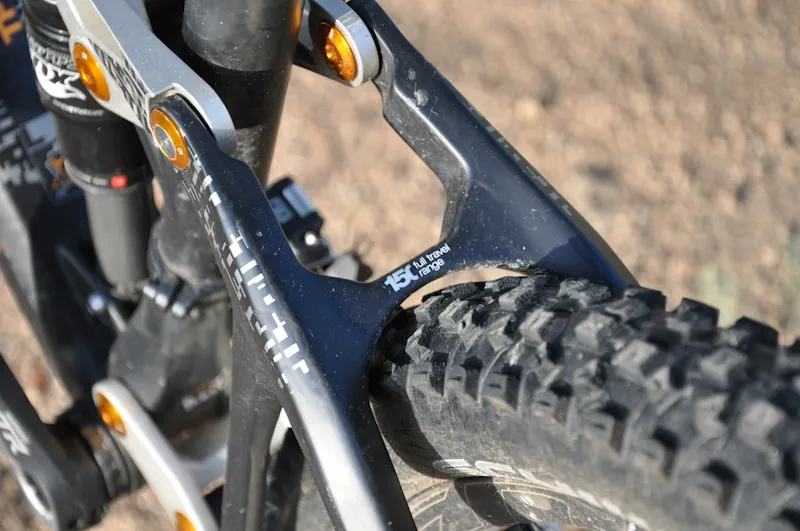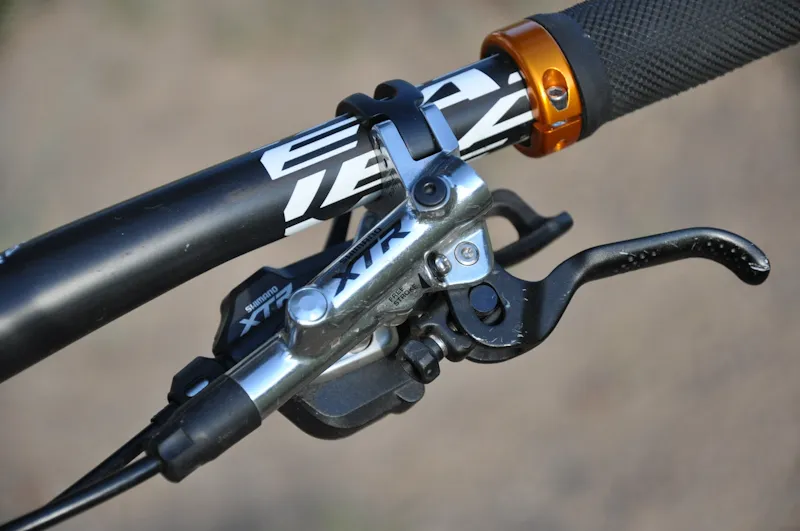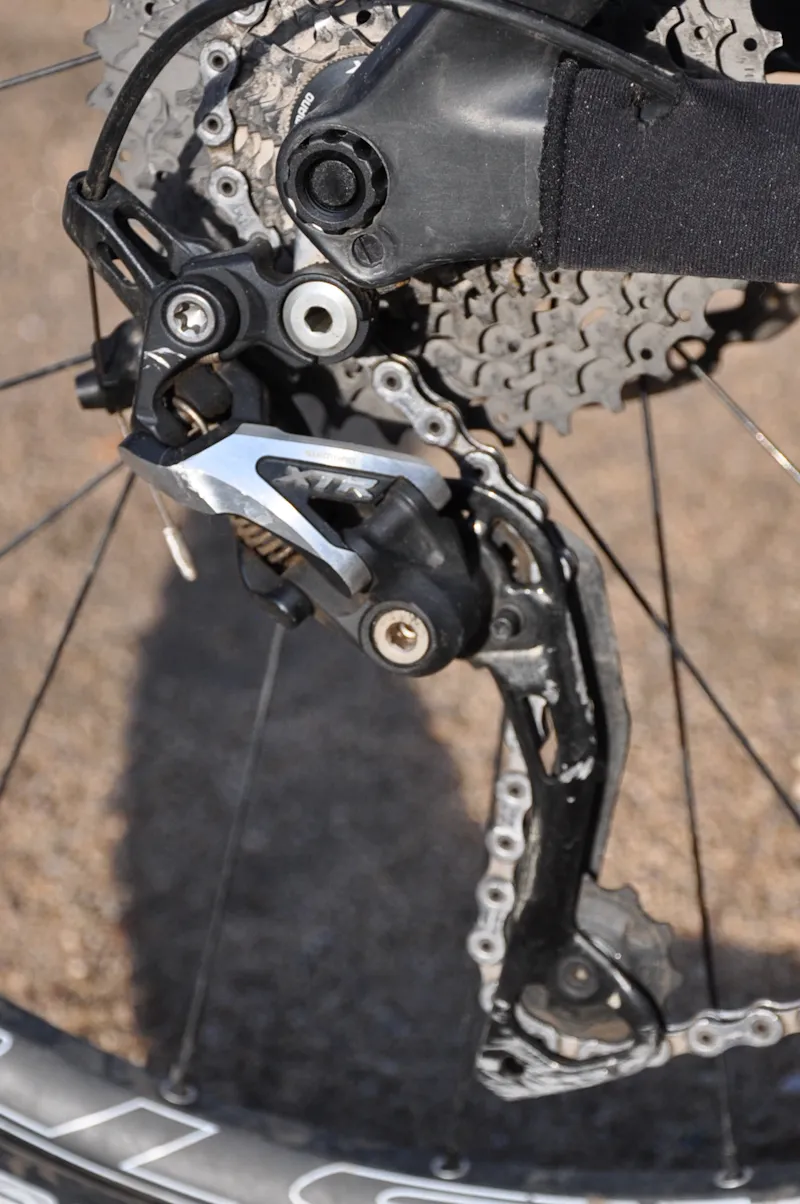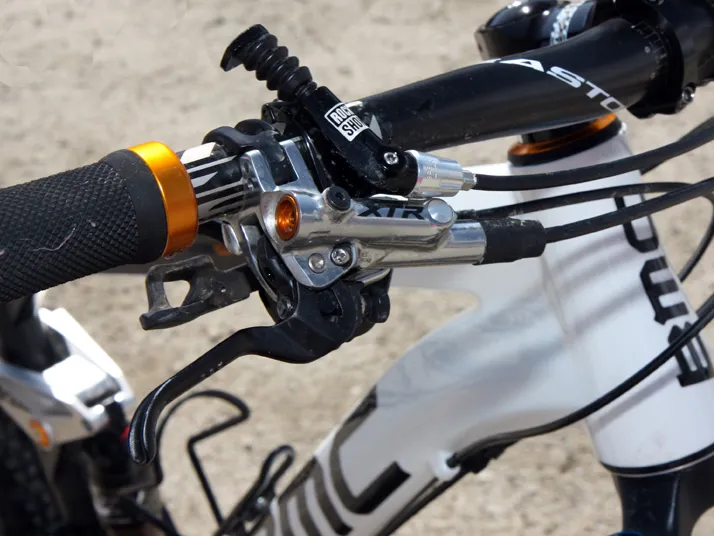This latest carbon fiber incarnation of the BMC Trailfox is designed to be a Swiss Army knife of a bike, with trail-friendly geometry and a sub-25lb weight that belies its 150mm of rear travel. For lighter riders, its low weight and pedalling stability make it one of the best all-rounders we’ve ridden.
UK pricing is competitive because Evans Cycles sell direct rather than through dealers – a Shimano XT based build is £4,000, with a lighter SRAM X0 option at £4,500. US riders must dig deeper into their pockets, though, with the Shimano XTR equipped bike shown here costing a whopping $8,500. That makes the frame flex and chain growth issues we've identified hard to stomach, especially for larger or more aggressive riders.
Ride & handling: Light and efficient (for a 150mm bike) – maybe too light for bigger riders
Since we first tested a Trailfox back in 2008, every new version has felt better. This full-carbon chassis is the lightest so far – our size large test bike tipped the scales at a hair under 25lb – and you can feel the benefit on climbs and in acceleration. Frame weight is about 5.5lb (including shock and quick-release seat clamp), which is over a pound lighter than the aluminium version.
BMC have hit the mark when it comes to geometry, too. The long top tube and 67.5° head tube angle (with the adjustable Fox TALAS fork set to 150mm) make climbing manageable while offering lively steering on technical terrain and great stability on all but the steepest descents. In fact, the front end was so comfortable on the vast majority of trails – whether pointing up, down or traversing across – that we rarely needed to drop the fork into its 120mm setting.
When we did, the resulting steepening of both the head and seat angles begged to be switched back as soon as the trail relaxed below a goat trail pitch. Out back, the relatively short 430mm chainstays are a good compromise between maneuverability and high-speed stability, but they don't create the expected playful feel up front and it takes a bit of effort to get the front wheel off the ground. The optional RockShox Reverb hydraulic seatpost is a perfect match for the bike.
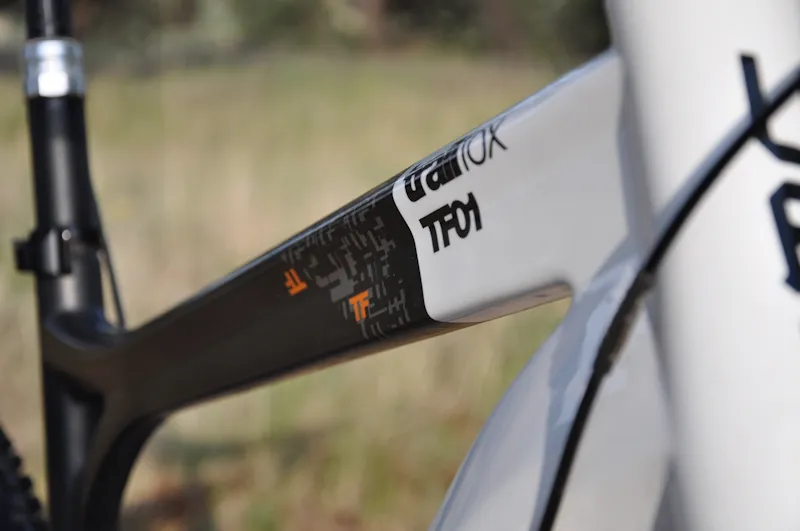
BMC’s APS (Advanced Pivot System) dual-link suspension design has a smooth progressive compression feel and the sort of efficient pedalling and anti-squat characteristics that make the TF01 one of the best longer-travel bikes to tackle difficult climbs and descents on. It provides a good pedaling platform while seated and even handles out-of-saddle bursts relatively well, as long as rebound damping is set up correctly.
Climbing performance is helped by Fox’s RP23 shock with Adaptive Logic, which offers a choice of three ProPedal (low-speed compression damping) settings. At level 1 (light) or 2 (medium) the suspension is still active but has a noticeable platform about halfway through its travel, giving the BMC a ride more akin to a short-travel bike. This is welcome on longer climbs and when riding on smooth surfaces, and the dial can be flicked quickly to the open position when it's time to point the TF01 downhill.
There's no obvious feedback from heavy braking and the suspension is less disturbed by rider weight shifts than on previous Trailfoxes. In fact, the BMC excels at absorbing medium and larger hits. However, the suspension is less impressive when it comes to smaller bumps and trail buzz, feeling like it awakens from a slumber as trail speeds increase. Even with damping backed all the way open and running more sag than recommended, the TF01 wouldn’t offer up the buttery ride we’d expect of a 150mm-travel frame.
This is partly due to chain growth – something which is built into the APS design. In the 37-60mm travel range, the rear wheel doesn't just move vertically to soak up the bumps, it also moves backwards by 5mm. In the mid stroke the rear axle returns to its original distance from the bottom bracket and in the deepest end of suspension compression it moves 5mm closer to the frame. In total, there's 1cm of chain length variation throughout the 150mm of travel.
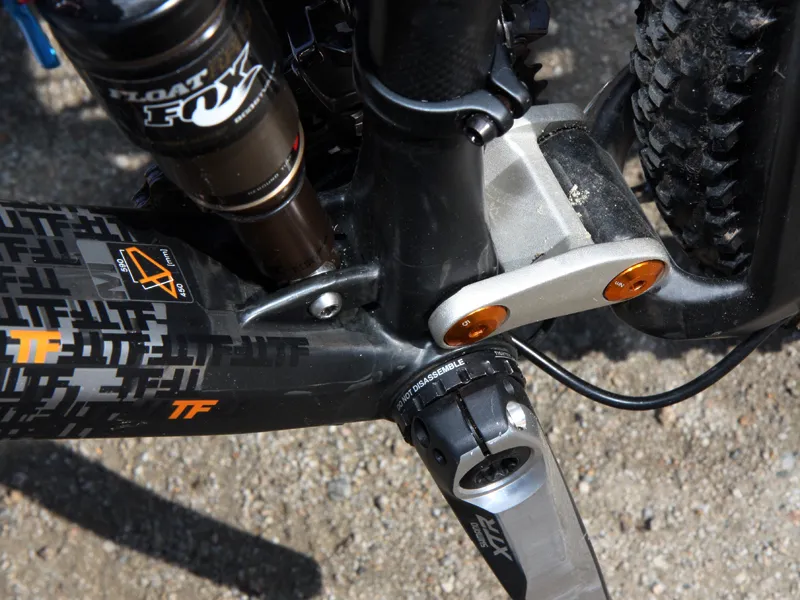
Chain growth stiffens up the suspension, which helps reduce bob while pedaling. However, it also reduces small bump suppleness and creates slack in the chain when the shock rebounds. According to BMC’s Markus Eggimann, the initial chain growth “isn’t noticeable in normal riding conditions” and the chain shortening further into the travel “allows excellent square bump absorption even while under full pedaling load, without noticing crazy kickback”.
Our experience backs up Eggimann’s claim of not being able to notice the chain growth under normal riding conditions. However, there are some situations where it is noticeable. On high-torque technical climbs, pedal feedback rears its ugly head on occasion. In fact, we had several instances where it felt like the rear derailleur was about to get yanked off the hanger (with the correct chain length). Powerful pedaling through rougher terrain that pushes the Trailfox’s suspension into its mid-range also creates noticeable feedback, but doesn’t seem to put as much stress on the drivetrain.
One other issue with the APS design is that it seems to work best with a 32-tooth chainring – not the 26/39t setup provided with our test bike. Running the chain on the inner ring increases bob, while shifting to the big ring causes the suspension to stiffen up. Thankfully the TF01 is also available with a Shimano XTR triple chainset with a 32t middle ring.
Divided opinions
A first ride on the TF01 left our UK-based technical director Steve Worland seriously impressed. He said its low weight and pedalling stability made it one of the best all-round trail bikes he’d ridden – “light enough to race but tough enough to tackle a big Alpine trip”. Although he noticed the chain growth, he didn’t see it as a major issue.
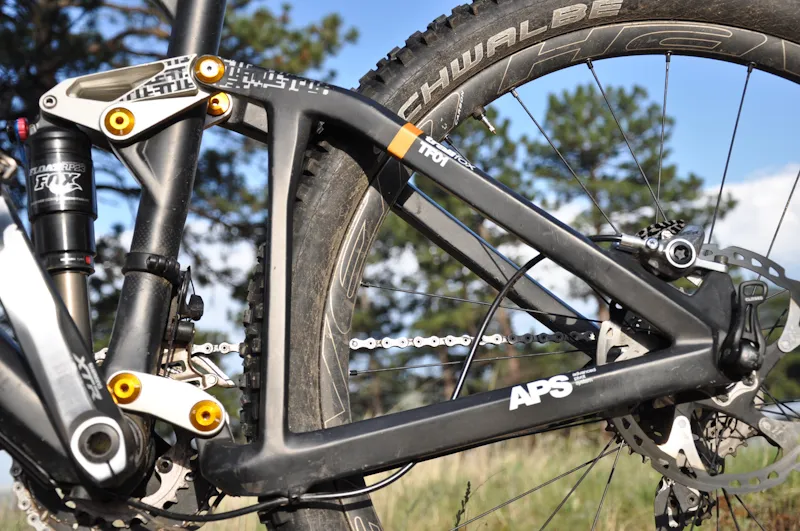
After more time on the bike, our American tester Zach White also liked it but he wasn’t quite so blown away – partly because in the US it’s a lot more expensive but also because he felt there was too much frame flex. While the head tube and down tube held their own through most terrain, he reported feeling the seat tube wandering while in the saddle and said the back end flexed enough to be distracting. On climbs, this rear end flex progressively skimmed power transfer off the top of rider output as watts increased, and caused some instability on technical terrain.
Admittedly, at 6ft 3in tall, weighing 200lb and with a history in pro-level downhill racing, Zach is likely to put any bike under more strain than the average rider. Steve actually felt the TF01 was stiffer than previous alloy Trailfoxes he'd ridden (he tested a medium frame, while Zach was on a large). However, it may be that BMC have shaved off just a little too much weight for more aggressive/heavier riders.
Frame & equipment: Hard-hitting carbon beauty with wishlist spec
Practicality is to the fore on the 2012 TF01: the stiff forged aluminium links have quality cartridge bearings, all the same size for easy servicing, the down tube underside is protected from rock strikes by a bolt-on overplate, there’s a stainless steel chain-suck deflection plate, a Neoprene chainstay protector, plus room for a bottle cage on the down tube.
The head tube is tapered, axles are bolt-through, rear brake tabs are post-mount for 180mm rotors and the threaded bottom bracket is compatible with most cranksets. The frame features a massive box-section down tube and a sloping T-girder top tube, braced to a seat tube that flares wide into the bottom bracket shell.
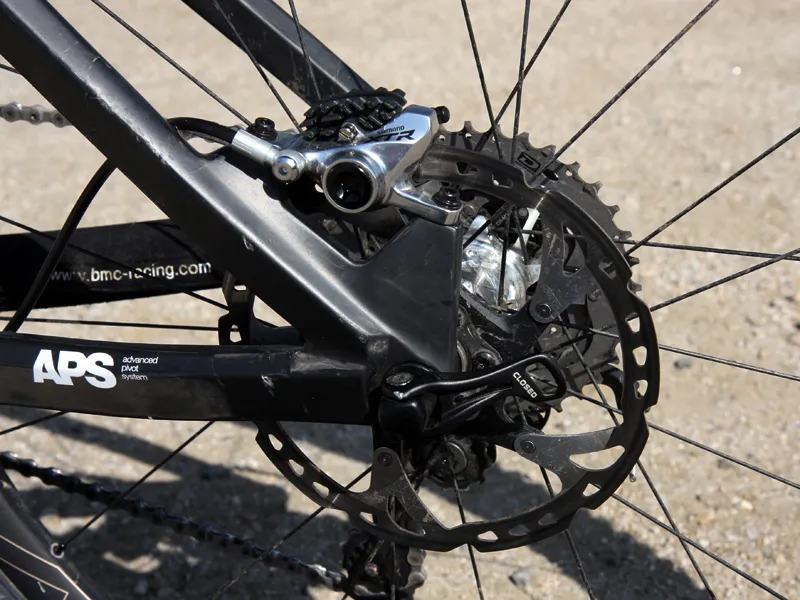
The double-slotted seat tube top is fitted with BMC’s excellent quick-release clamp. Changes to geometry over other Trailfox models include a longer top tube, shorter chainstays and steeper head angle. Aluminium models are still available if you don’t mind the weight penalty.
The US-spec, XTR-based build on our test bike is essentially a best-of-the-best components showcase, which explains the high price. The only thing missing is an appropriate set of tires – Onza’s Ibex and Canis are simply too flimsy and biteless for proper trail riding. We ended up running Schwalbe Hans Dampfs front and rear, which are a much better match for the TF01, although their 2.35in girth doesn’t leave much mud clearance.
Easton’s Haven component line is an excellent choice for a 150mm-travel bike. The carbon wheelset gives a light, agile feel to the Trailfox and shows no signs of use after hours of rough riding. The carbon handlebar provides plenty of width and stiffness along with a comfortable bend, and the aluminum stem is about as solid as they come for trail use. Shimano’s XTR once again proved itself to be the cream of the crop, with shifting and braking that were as good as one could hope for.
Fox’s TALAS 32 fork with Kashima coating offers a great balance to the 150mm of travel out of the RP23 in the rear. The RockShox Reverb dropper seatpost worked flawlessly throughout testing. The Fizik Tundra 2 saddle is the only other weak point of the spec. While down to personal preference, chances are this seat won’t sit well with riders who appreciate a forgiving, softer-nosed saddle.
